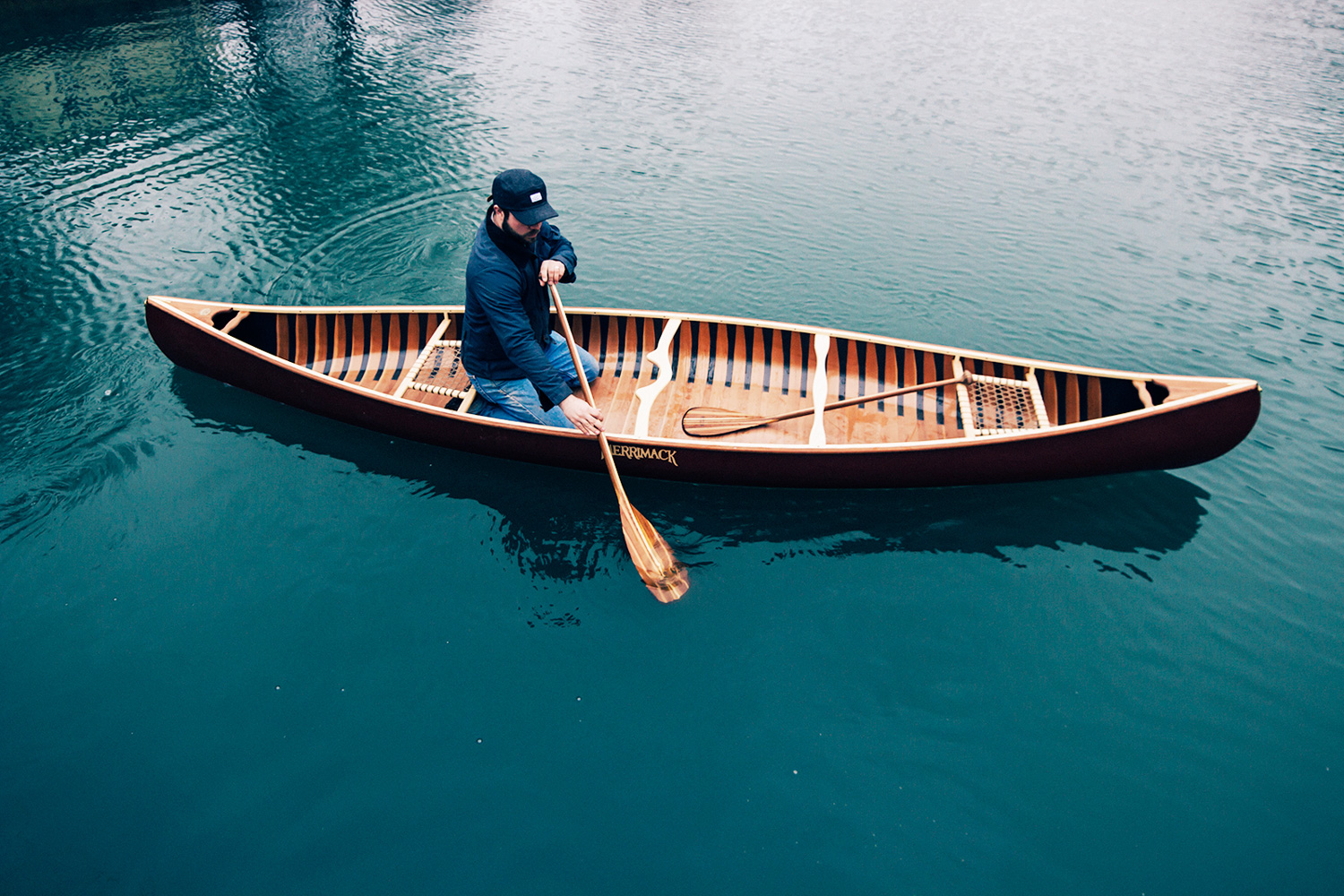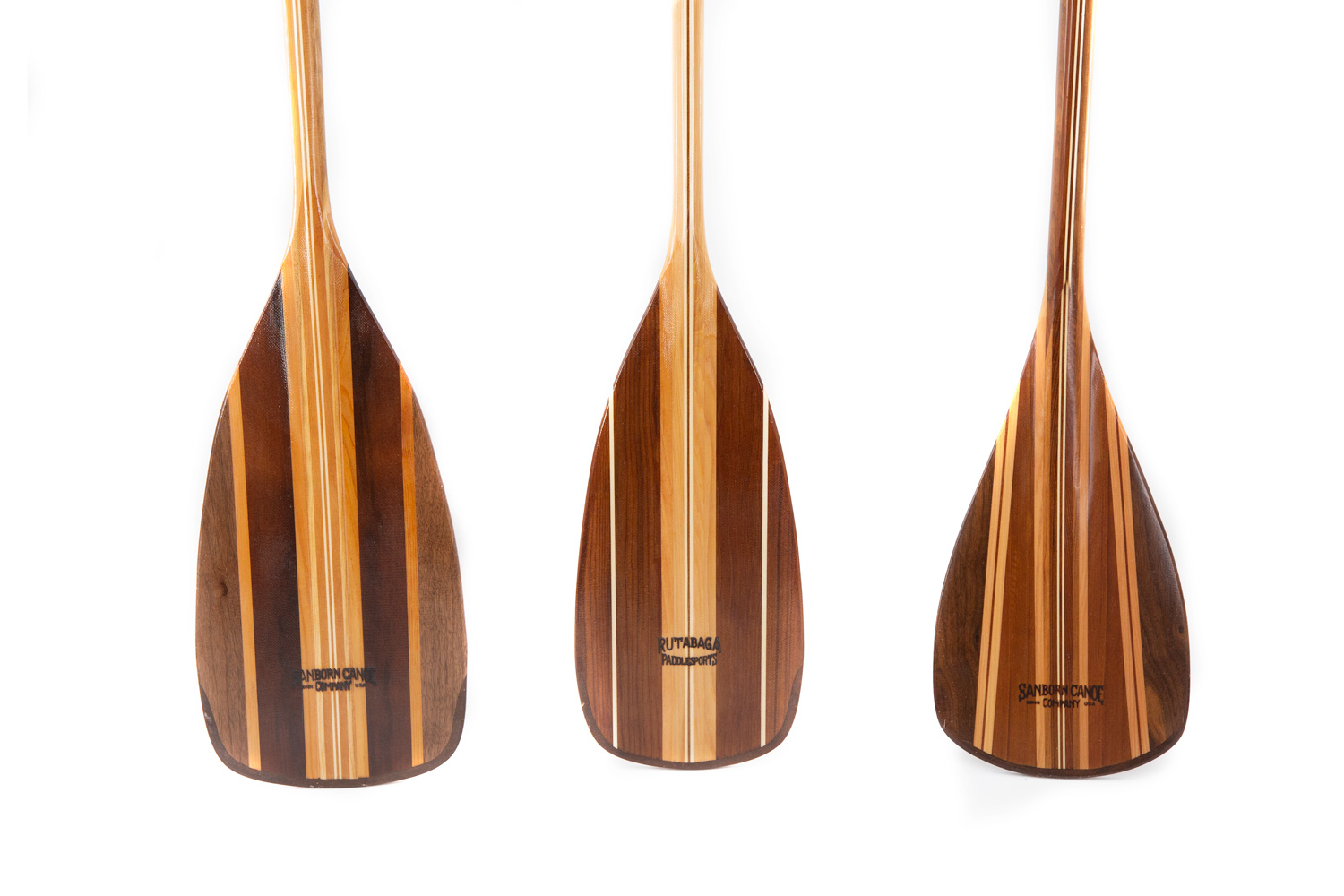
Choosing a paddle is always a personal decision. While some paddles will be distinctly better for a particular use than others, it will still largely come down to personal preference; bent-shaft vs. straight, large blade versus small, square blade or otter-tail, ultimately the right paddle for you is always going to be the one that feels good when you use it. Whether you're looking for a canoe paddle for plodding across a quiet pond or for shooting rapids on an extended trek through the arctic wilderness, a comfortable and reliable canoe paddle will help make your experience the best it can be. On this page we’ll give you a quick overview of some general paddle features, and a quick run-down of our most popular paddles in the hopes that you can narrow down what you’re likely to enjoy. But again remember, the best paddle you can buy is the one that makes you want to spend more time on the water, and that feels good while you’re out there.
Sizing
One of the most important details in choosing a paddle, its size must be right to ensure comfortable use, especially during longer days on the water. To size yourself for a paddle, first sit up straight on a flat chair and measure the distance from the seat between your legs to your eyes. Here bent shaft and straight shaft paddles diverge. For the bent shaft paddle, simply add the blade length to this measurement (you can find the blade length on each paddle's product page). For straight shaft paddles, you'll want to add the blade length and an additional 2-4 inches to get the final paddle size. Keep in mind that this process is always a bit subjective. If your canoe sits a bit higher or lower in the water, or if your canoe is very wide or very narrow, it can change the length of paddle that feels correct. Ultimately, the paddle you can use comfortably for longest is going to be the best fit for you.
Blade Surface Area
A paddle moves a canoe forward by pushing water backwards, and the larger the blade of the paddle the more power you will have, all else being equal, which means you’ll be able to accelerate more quickly and usually find it easier to fight against a current or strong wind. The downside to more power is that the power is coming from your body. While proper paddling technique is vital to reducing fatigue and potential injuries to your shoulders and arms from repetitive motions, it’s also true that the more water you’re pushing, the more resistance you’re experiencing. A smaller blade will offer less resistance with each stroke, typically meaning you’ll experience less fatigue. However, a smaller paddle blade also means you’ll need to keep the number of strokes per minute (your cadence) up a bit higher to maintain a given speed.
Bent Shaft vs. Straight Shaft
Aside from simply choosing what is most comfortable, the main trade-off in choosing between a bent shaft or a straight shaft is a decision between more power and more deft strokes. For the bow paddler (that’s in the front of the canoe), typically they will be focused more on just keeping up a steady rhythm, without much in the way of steering, and a bent paddle is often a good choice there. But for the stern and solo paddler, a straight shaft typically allows them to perform more deft ruddering and corrective strokes, making it possible to keep the canoe going in the desired direction without needing to switch to paddling on the other side as often. That said, when fighting stronger currents, or if switching sides more often helps you stay comfortable, a bent shaft may still be a good option.

Blade Shape
This will typically be the most subjective part of choosing your paddle, and let’s be honest- it’s ok to choose a paddle entirely based on how it looks. Inspiration is a critical component of choosing to spend time on the water, and a paddle shape you love to look at can really help there. That said, there are a few aspects of paddle shape that might influence your decision and use.
As mentioned above, the larger the surface area of the blade, the more power you’ll have, but there is a caveat to this: only the section of the blade that is submerged is actually pushing against the water. A very long, skinny blade will not provide much power at all in a stream that’s only a few inches deep. In these cases, a wider, squared-off blade (such as our Gunflint, Nessmuk, and Minnewashta paddles) will typically be a bit more useful, since the width is the critical feature in that case. However, a longer, thinner blade (such as on our Wapasha and Sam’s Special paddles) will offer a bit less resistance and noise when placing the paddle in the water, so in deeper conditions that might be preferred. Our Minnesota paddle offers a hybrid blend of these two choices, offering a squared-off blade that still tapers near the bottom.
Durability
Most of our paddles offer three durability choices: Standard, Wilderness, and Lightweight. The Lightweight option, true to its name, is entirely oriented around weight savings. It has a thinner shaft (and is only built on a bent shaft) and a thinner blade, the latter reinforced by carbon fiber to add rigidity and strength in spite of its very thin profile. This option is not designed to take hard knocks against rocks, roots or the side of your canoe; water and air are the only things a lightweight paddle should be touching. This is a great choice for paddling many many miles in a day, as the weight savings really makes the repetitive motions on your shoulders and arms a bit less strenuous, and the weight saved on long portages is an added bonus.
The Standard option still uses lightweight cedar and aspen in its construction, but a thicker shaft and blade (reinforced by fiberglass rather than carbon fiber this time) mean you still have a fairly light paddle, but at a significantly lower cost than the Lightweight selection. While it isn’t intended to take abuse, the occasional knock is much less likely to seriously damage it.
Lastly we have the Wilderness option. Hardwoods are substituted into the construction, adding a lot of strength at the cost of a bit of added weight. Paddling in very rocky rivers, in fast changing currents, or narrow streams often find the paddle coming up against harder objects, and the hardwoods used in the Wilderness option are much more able to handle this repeatedly without suffering major damage. That said, care should always be taken with your paddle, as you really don’t want to find yourself caught without one.
Finally, nearly all of our performance paddles (excepting the Minnewashta, and Primary Paddle) feature a rock guard at the tip of the paddle. This epoxy tip is very tough and will save your blade from the occasional swipe or push against a rock. Our Artisan and Minnewashta paddles lack this feature, so use extra care with those paddles.
